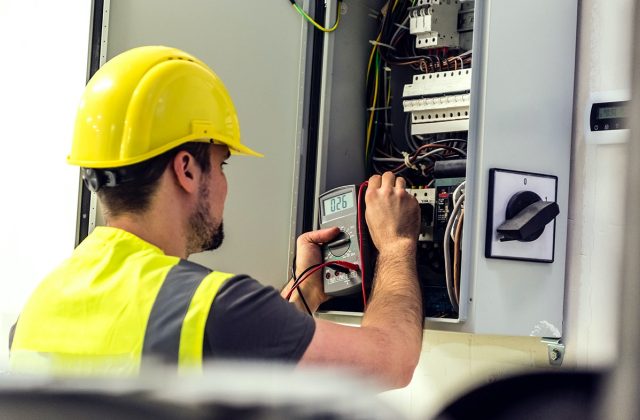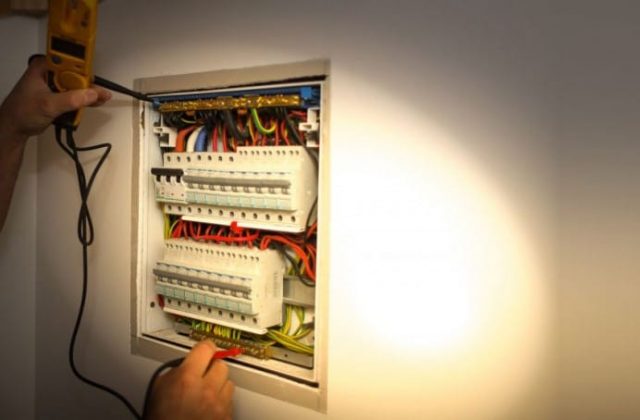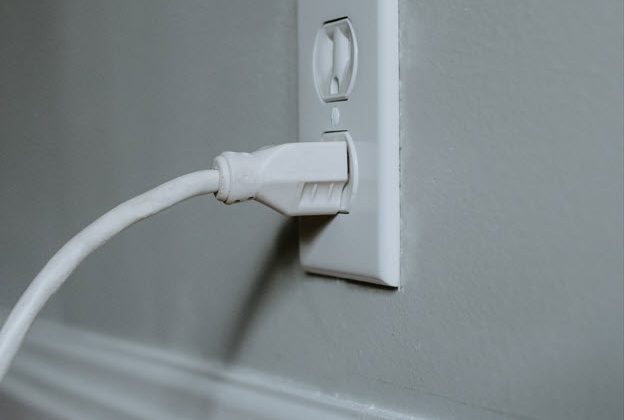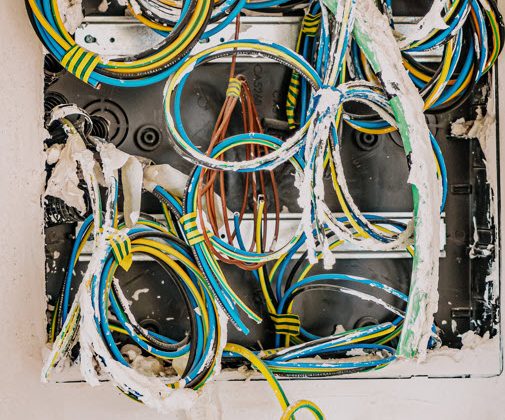Call 1300 205 205
RCD Testing
- Master Electrician 10+ years experience
- Full year’s warranty on all parts – that’s the Hit the Switch way
- Local Electricians – Fairer, Better, Right – First time, every time
- Electricians who understand your home is your castle
- Free no obligation advice
Talk to us at a time that suits you
Save the hassle and let us call you to book in a quote.
Talk to us at a time that suits you
Save the hassle and let us call you to book in a quote.

Whether it is for RCD testing of emergency lighting, the Team of Electricians at Hit The Switch is fully licensed and accredited to test, assess, and install safety switches in your home, rental property, and workplace.
A safety switch, also known as a Residual Current Device (RCD), is a safety control that protects against electric shock and fire due to electrical faults. RCD installation and testing are important in ensuring electrical safety and preventing electrical accidents at home and in the workplace. Consequently, as electrical systems become more sophisticated and complex, the need to integrate reliable safety mechanisms becomes more important.

What are RCDS, and why are they important?
Licensed electricians install RCDs – most often at the switchboard – to monitor the flow of electricity through a circuit and detect imbalances in the flow of electricity between active and neutral cables. When they detect an imbalance, they switch off the electricity supply to the electrical circuit within 0.03 seconds, fast enough to save a life. This sounds complex, but they are vital in protecting people against electric shock or accidents.
Whether you are a Business Owner, Landlord, Real Estate Agent, Property Manager, Homeowner, or Resident, understanding RCD testing can make a real difference to the community’s safety by reducing the risk of electric shock, fire, and property damage.

For Homeowners and Residents
RCD installation and testing at home is paramount to the safety and protection of you and your family. Moreover, electrical accidents can happen to anyone anywhere, so having an RCD fitted to your home is the best way to prevent serious injury. However, it is not enough to install an RCD; you must test it annually to ensure it remains functional.
If your home was built after 2000, your home should have been fitted with RCDs at the time of building. However, if it was before 2000, you may still have an old fuse box with ceramic or porcelain fuses. These fuses do not provide any protection from electrical shock. In fact, they often trip the power when they overheat, are prone to breaking, and may be a fire hazard. Thus, consider upgrading your fuse box to a new switchboard with RCDs and circuit breakers. If you want to learn more about switchboard upgrades, click the link below.
For Landlords, Property Managers and Real Estate Agents
Testing of RCDs in rental properties forms part of the Electrical Safety Check now required for rented premises in Victoria. The Victorian Tenancies Regulation introduced these new requirements in 2021 and has made the installation of RCDs mandatory in rental properties from March 29, 2023.
The new regulations have been implemented to ensure that electrical safety inspections are carried out regularly and that all electrical installations and appliances are compliant. These rules cover the connection of power outlets and lighting circuits in the rented premises. They are to be;
– Connected to a switchboard-type circuit breaker that complies with AS/NZS 3000
AND
– A switchboard-type residual current device that complies with AS/NZS 3190, AS/NZS 610081 and AS/NZS 610091.
If you are considering buying an investment property or you are a Landlord, Real Estate Agent, or Property Manager, you can read more about the mandatory Electrical Safety Checks and Electrical Safety Reports for rental properties and your obligations here.
To read more about these new Residential Tenancy Regulation rules, refer to Energy Safe Victoria’s website here and the Victorian Residential Tenancies Regulations 2021 here.
For Business Owners and Managers
Businesses run best when staff are productive, equipment is in good working order, and insurance claims are minimal. Employers have a duty to provide and maintain a safe workplace and, where practical, minimize or eliminate risk to health. Accordingly, part of this process involves identifying electrical hazards, assessing their risk, and implementing controls and procedures to minimize them. Consequently, as a Business Owner or Manager, understanding your obligations to keep your workplace safe and compliant is paramount.
RCD installation and testing form part of the ongoing commitment to workplace safety and compliance. RCD testing is part of an ongoing preventative maintenance plan which often includes emergency lighting audits, thermal imaging, and test and tag. To learn more about our preventative maintenance services, click here.
Also, to learn more about electrical risks in the workplace, please refer to WorkSafe Victoria here.
What is RCD Testing?
RCD testing is the process of evaluating the functionality and performance of residual current devices. RCDs can become faulty from exposure to dust, grit, lack of use, or physical damage over time. The internal components can stick or fail to move, slowing down the tripping response or failing to trip at all. RCDs can be wired incorrectly or installed upside down, which causes them to be ineffective. Several tests are available to measure the integrity and functionality of an RCD.
Importance of RCD Testing
RCD testing is paramount to keeping electrical safety. By testing your RCD regularly, you can find potential failures and malfunctions before they lead to accidents and damage to your electrical equipment. RCDs are the primary safety measure installed to protect people and property from electrocution, electrical fire, and other electrical hazards. Certainly, a properly functioning RCD can save lives.
Types of RCDs
There are many different types of RCDs, each serving a specific purpose. Common types include:
- Fixed RCDs: They tightly integrate into electrical installations and protect specific circuits or groups of circuits.
- Portable RCDs: Also known as plug-in RCDs, these devices protect appliances and extension cords by simply plugging them into a socket.
- Socket Outlet RCDs: These RCDs attach to a socket outlet and supply local protection for equipment connected to that particular socket.
- Time-Delay RCDs: These RCDs have a time-delay feature that compensates for temporary current imbalances, such as those resulting from appliance activation, without tripping the circuit.
Most RCDs in Australia are 30 mA type. This means that they can trip as low as 15 mA and must trip at 30 mA. Interestingly, they differ from other protection devices that usually trip when the value surpasses the set point.
How Does RCD Testing Work?
RCD testing includes various steps to ensure that the device functions properly. Testing procedures may include:
- Visual Inspection: This includes inspecting the RCD for visible signs of damage, wear, or improper installation.
- Push-Button Test: Pressing the RCD’s test button trips and powers down the RCD, simulating a fault scenario.
- Ramp Test: This test determines the trip sensitivity of the RCD by stepping the residual current.
- Trip Time Test: This involves measuring the time it takes for the RCD to trip when a fault current is applied.
- Earth Leakage Test: Finally, this test checks the ability of the RCD to detect and cut power in the event of an earth leakage.
RCD Testing Procedures
- Visual Inspection: First, visually inspect the RCD for signs of physical damage, loose connections, or overheating. Make sure the RCD is properly installed and free of obstructions.
- Push-Button Test: Next, press the test button on the RCD to see if it trips and turns off. If it does not trip, or shows unusual behaviour, this warrants further investigation.
- Ramp Test: A special device is used to perform the ramp test, gradually increasing the fault current and seeing the response of the RCD. This test helps decide the sensitivity and accuracy of the device.
- Trip Time Test: A special RCD tester measures the time it takes for the RCD to trip when a fault current is applied. Compare the results to the specified trip time limits.
- Earth Leakage Test: Finally, conduct an earth leakage test to verify that the RCD effectively detects and cuts power in the presence of earth leakage.
Frequency of RCD Testing
The frequency of RCD testing depends on many factors, including RCD type, operating environment, and applicable regulations. In general, it is recommended that the RCD test be performed at least every 12 months, per AS/NZS 3760. However, certain environments with high electrical risks, such as construction sites, may require more frequent testing. For more information on the frequency of RCD testing, please contact the team at Hit the Switch here.
Benefits of Regular RCD Testing
Regular RCD testing has several advantages.
- Safety Assurance: Testing ensures that the RCD works properly and supplies a reliable safety mechanism to protect against electric shock and fire.
- Compliance: Regular testing helps ensure that you follow legal and regulatory requirements, and that electrical systems meet safety standards.
- Preventive Maintenance: Early detection of errors enables prompt repair or replacement and prevents possible accidents and damage to the equipment.
- Peace of Mind: Knowing that your RCD is regularly tested and working gives you confidence in the safety of your electrical system.

Common Issues Detected During RCD Testing
RCD testing often reveals common problems such as:
- Faulty Tripping: If the RCD trips too quickly or too slowly, it may show a faulty internal mechanism.
- Sensitivity Issues: An RCD that does not trip at its specified fault current levels may need adjustment or replacement.
- Wear and Tear: RCDs can degrade over time due to environmental influences and aging and may require replacement or repair.
- Incorrect Wiring: Testing may reveal wiring or connection defects that may affect the effectiveness of the RCD.

Choosing the Right RCD Testing Equipment
When performing RCD testing, it is important to use proper test equipment. Equipment must follow relevant standards and have the features necessary to perform accurate and reliable tests. Consult an expert or refer to industry guidelines to choose the right equipment.
Hiring a Licensed Electrician for RCD Testing
Although you can do the RCD test yourself, we recommend using a qualified electrician for a correct and comprehensive test. As professional electricians at Hit The Switch, we have the ability, knowledge, and dedicated equipment to perform thorough RCD testing to ensure safety and compliance. Also, if the RCD does not operate as expected, Hit The Switch’s team of licensed electricians will ensure to complete proper RCD testing and correctly replace your RCD, as necessary.
DIY RCD Testing
For a simple push button test, a homeowner or anyone with basic electrical knowledge can do their own RCD test. However, for more advanced testing and more correct results, we recommend contacting a professional or using dedicated RCD test equipment.
Tips for Ensuring Safety During RCD Testing
- Knowledge and Training: Obtain thorough knowledge and training in RCD testing procedures and safety precautions prior to testing.
- Power Off: To avoid electrical hazards, always turn off the power before running the RCD test.
- Personal Protective Equipment: Wear proper personal protective equipment when handling electrical components, including insulated gloves and safety goggles.
- Follow Guidelines: Follow the manufacturer’s instructions and relevant safety guidelines when performing RCD testing.
- Regular Maintenance: In addition to testing, ensure regular maintenance and inspection of electrical systems to detect potential problems.
Conclusion
RCDs can help save lives, but only if they are properly working and can react fast enough to existing conditions. RCD testing is an important aspect of electrical safety. Regular testing and maintenance of your RCD can help minimize electrical hazards and ensure the safety of people and property. Whether you perform it yourself or seek the help of a professional, RCD testing plays an important role in preventing electrocution, fires, and other electrical accidents.
Get in touch to see how we can help you!
Contact us today